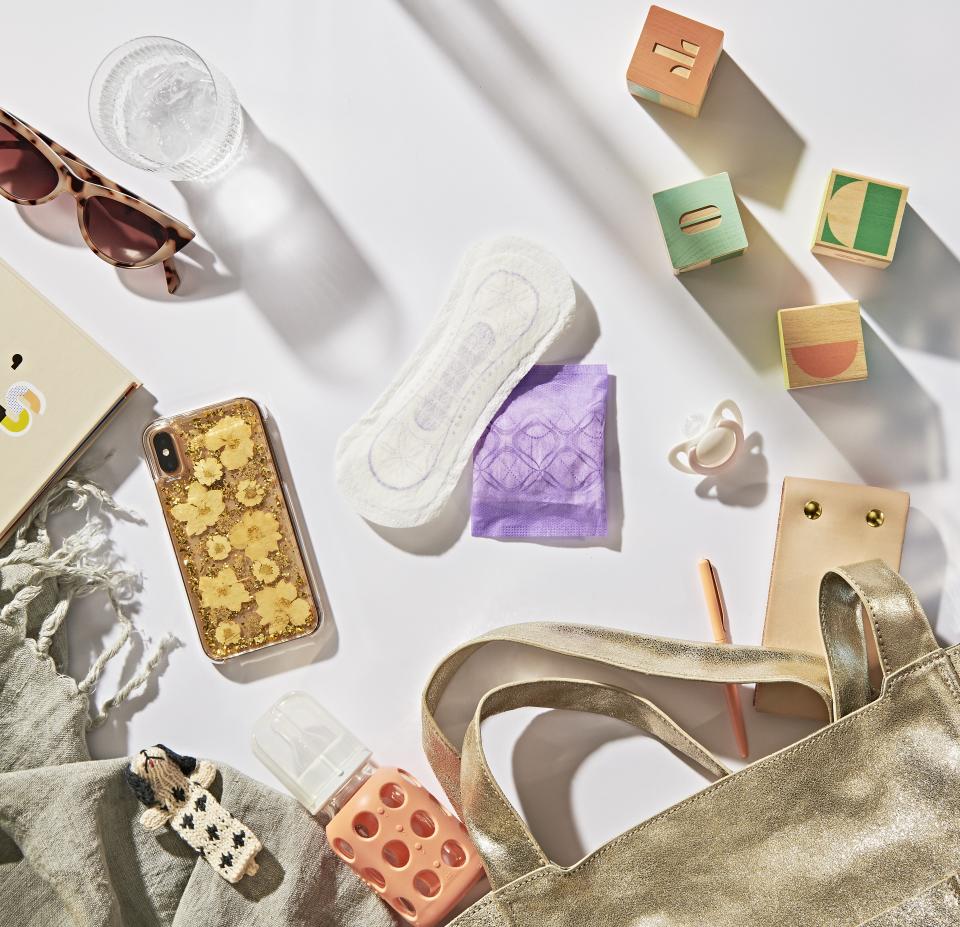All the Weird Things That Happen to Your Body Post-Baby
It’s only a matter of time: The moment a new mom manages to feel comfortable with her post-baby body, some Instagram personality will post a smug "Pregnancy is NBD!" photo—you know, that four-months-postpartum snapshot of her bikini-clad figure looking as slim as ever, captioned, “Loving my post-baby body!” Subtext: “See, that wasn’t so hard! (What are the rest of you doing wrong?!)”
The annoying part isn’t that some new moms promptly return to their prebaby weight—some effortlessly, some with a whole bunch of effort. Okay, maybe that part is a tiny bit annoying to those of us who struggle for longer. But the real issue is how inauthentic these post-baby brags feel to anyone who’s spent the better part of a year growing a human, only to find herself suddenly residing inside a body that doesn’t feel anything like the one she knew for decades. Because honestly, weight is just the beginning. Sure, it’s an adjustment to go from naturally flat abs (the one body part I could count on to always look in shape!) to something rippled and squishable in a foreign way (the “unbaked loaf of bread,” as my running buddy and I call it). But honestly, that’s nothing compared with some of the other weird things that might change about your body after a baby. After pushing out three of my own, watching friends go through countless pregnancies, and researching this topic frequently as a writer, I can promise you that those “Pregnancy is NBD!” influencers are experiencing plenty of funky changes #BTS, no matter how determined some are to maintain the illusion of perfection on the ’Gram. You already know about stretch marks and have possibly seen Instagram discussions of diastasis recti (abdominal separation), but there are a whole bunch more weird bodily adjustments that are totally normal—and common—for any new mama to go through.

after pregnancy body.jpg
Your favorite shoes may no longer fit.
Due to a combination of pregnancy hormones and weight gain, it’s common for feet to grow a half size while you’re carrying a child—and as devastating as this news may be for your fledgling collection of Louboutins, they are more than likely to remain in this upsized state permanently.
Your boobs may never be the same.
You probably know your breasts will grow during pregnancy, but did you know your nipples can dramatically change in color and/or size? “They’re literally the size of Coke cans!” one friend said when describing her formerly petite areolae. Then there’s the nip stuff that happens if you nurse your baby; a different friend’s husband referred to hers as “rolls of coins.” At least these unexpected breast developments are often temporary, unlike one of the most infuriating post-baby body changes: Just when you’ve adjusted to newly abundant amounts of cleavage and a whole new wardrobe of bras, your breasts will deflate into a slightly smaller and saggier version of what you had originally (the latter is called ptosis, a permanent change resulting from stretching of the ligaments in your breasts). If life were remotely fair, boobs would simply return to prebaby proportions.
Say hi to your new ’stache!
I’m not even referring to newly sprouted facial hair, although the surge of estrogen pregnancy brings could certainly lead to those (Adele wasn’t ashamed to tell us about her “pregnancy beard”). I’m referring to melasma, whereby the skin above your upper lip darkens thanks to—you guessed it—those fun pregnancy hormones. While that tan mustache will likely fade a few months after childbirth, it could continue to resurface with sun exposure indefinitely, requiring you to be forever extra diligent about your SPF 30.
Your skin will find creative new ways to freak out.
Never had a neck pimple before? Now might be your chance; inflamed red dots can crop up in all kinds of unexpected places after you have a baby. (Even celebrities aren't immune to things like itchy red patches.)
Your bladder might be out of whack—even if you have a C-section.
If you luck out and manage to emerge from childbirth still not really understanding what a hemorrhoid is, prepare yourself for bladder leakage. “Even patients who have had a cesarean delivery have problems with incontinence,” Eliza Orzylowska DeBow, an ob-gyn in New York City, notes. Diligent Kegel exercises (or visits to a pelvic-floor physical therapist) can help with stress incontinence—where you leak when you cough or sneeze, stand up too quickly or jump—but you’ll want to have an effective backup plan lined up (i.e., a secret stash of Poise Daily Liners).
About that line down the center of your belly…
Called a linea negra, this unexpected darker strip that appears on your bump and then hangs around seemingly forever. “It typically lasts two to three months after delivery but can last up to a year. Mine took six months!” says DeBow. “It’s related to hormones during pregnancy stimulating melanocytes, the cells that give pigmentation to our skin.” Whatever the explanation: weird!
Your period could become apocalyptic.
Here’s another post-baby bodily change to file under “aggressively unfair.” Shouldn’t periods pale in comparison with the experience of childbirth? Apparently, nature feels the answer is a resounding no, because let’s just say the floodgates have opened. My friends and I have been assuming it’s that our vaginas stretched out during labor, but turns out there’s another explanation. “The uterine lining goes through many changes during and after pregnancy,” DeBow explains. “It remodels and is never quite the same as it was. This can sometimes make periods heavier and last longer. And if you've been on hormonal birth control before pregnancy and after delivery you are not, this can also make your periods heavier and more painful, because hormonal birth control—especially the pill—thins out the uterine lining and helps ease menstrual pain and symptoms.”
Originally Appeared on Glamour

